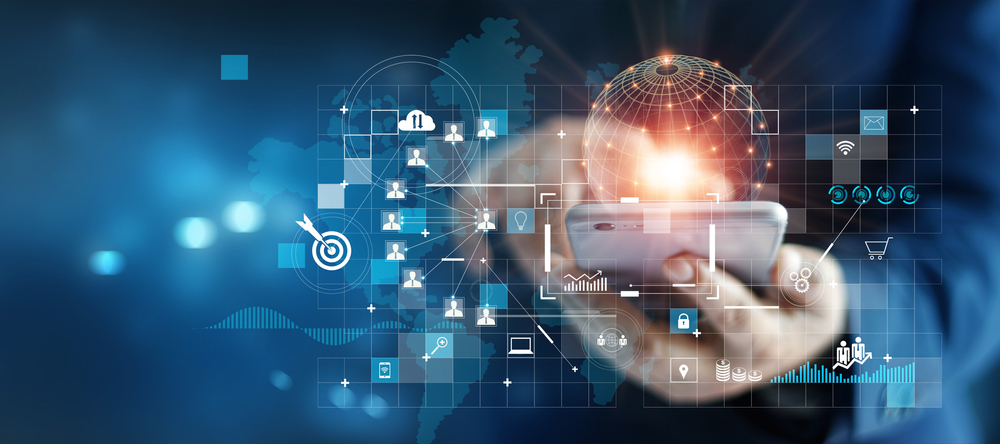How Technology Is Reshaping Our World: From Convenience to Transformation

Technology is no longer a separate industry—it’s the fabric that weaves together how we live, work, learn, and connect. From smartphones and artificial intelligence to smart homes and self-driving cars, technology has become an integral part of daily life. But more than just convenience, technology has sparked a revolution, transforming society in ways that were unimaginable just a few decades ago.
In this article, we’ll explore how technology is reshaping the world, its benefits, its challenges, and how we can harness its power responsibly for a better future.
The Evolution of Technology: A Quick Look Back
Just 20 years ago, smartphones were a luxury, social media didn’t exist, and most homes still had dial-up internet. Fast forward to today, and we’re carrying supercomputers in our pockets, video-calling people across the world in seconds, and asking voice assistants to play our favorite songs or control our lights.
Technological advancement has accelerated at an unprecedented pace—what used to take centuries now happens in decades, and what took decades is now done in years.

How Technology Is Transforming Our Lives
1. Communication: From Letters to Lightning-Speed Messages
Technology has revolutionized how we communicate. Emails, instant messaging, social media, and video calls have replaced handwritten letters and landline phones. Today, we can share thoughts, images, and experiences with the world in real time.
While this has increased connectivity, it has also introduced challenges like digital overload, online misinformation, and reduced face-to-face interactions.
2. Education: Learning Beyond the Classroom
The rise of online education platforms like Coursera, Khan Academy, and YouTube has democratized knowledge. You no longer need to attend a prestigious school to access quality education.
During the COVID-19 pandemic, technology became the backbone of remote learning, allowing millions of students to continue their education virtually. Augmented Reality (AR) and Virtual Reality (VR) are also being integrated into classrooms, making learning more immersive and interactive.
3. Healthcare: Smarter, Faster, More Accessible
Technology is revolutionizing healthcare:
-
Wearable devices track heart rate, sleep, and activity.
-
Telemedicine enables virtual doctor visits.
-
AI helps diagnose diseases like cancer at early stages.
-
Robots assist in complex surgeries with precision.
Medical data is now digitized, improving diagnosis, record-keeping, and treatment planning. These innovations are saving lives and improving quality of care globally.
4. Work and Business: The Rise of Remote and Automation
The workplace has evolved with cloud computing, video conferencing, and project management tools like Slack, Zoom, and Trello. The remote work movement has shown that teams can be productive from anywhere in the world.
Meanwhile, automation and artificial intelligence (AI) are changing job roles—making some obsolete while creating new ones in data science, cybersecurity, and AI development. The challenge ahead is upskilling and reskilling the workforce for the digital age.
5. Daily Life: Smart Living and Digital Assistance
Smart homes are no longer futuristic dreams—they’re reality. With a simple voice command, we can turn on lights, adjust thermostats, or play music. Apps can help us manage finances, track fitness goals, and even meditate.
Digital assistants like Siri, Alexa, and Google Assistant are becoming everyday companions. Grocery shopping, banking, and entertainment are just a tap away, making life more efficient and connected.

The Power of Emerging Technologies
Let’s look at some transformative technologies shaping the future:
• Artificial Intelligence (AI)
AI powers virtual assistants, recommendation engines, and even self-driving cars. It can analyze vast amounts of data quickly, helping industries make smarter decisions—from medicine to marketing.
• Blockchain
Known for powering cryptocurrencies like Bitcoin, blockchain is a secure and transparent way to record transactions. It’s being used in finance, supply chains, voting systems, and digital identity verification.
• Internet of Things (IoT)
IoT connects devices to the internet—your fridge, smartwatch, car, and even your toothbrush. This connectivity allows devices to collect data and optimize how they work, improving efficiency and personalization.
• 5G and Connectivity
5G offers faster, more reliable internet. It enables innovations like smart cities, remote surgery, and real-time gaming. Faster data transmission means less lag and more immersive experiences.
• Renewable Tech
Green technology is on the rise, with advancements in solar panels, electric vehicles, and sustainable materials. Technology is now a powerful ally in fighting climate change and reducing carbon footprints.
The Challenges of a Tech-Driven World
Despite its many benefits, technology also presents significant challenges:
-
Privacy Concerns: With so much personal data online, cyberattacks, identity theft, and surveillance are growing issues.
-
Screen Addiction: Excessive screen time can lead to sleep problems, reduced productivity, and mental health concerns.
-
Digital Divide: Not everyone has equal access to technology. Millions in developing countries still lack reliable internet or devices.
-
Job Displacement: Automation may eliminate certain jobs, especially in manufacturing and retail, creating social and economic uncertainty.

How to Use Technology Wisely
To truly benefit from technology, we need to be mindful users—not just consumers.
-
Set Digital Boundaries: Take regular breaks from screens. Use apps that monitor screen time and help reduce distractions.
-
Protect Your Data: Use strong passwords, enable two-factor authentication, and stay informed about online security.
-
Keep Learning: Technology is constantly evolving. Stay curious and invest time in learning new skills and tools.
-
Encourage Balance: Don’t let technology replace real-world interactions. Prioritize relationships, nature, and offline experiences.
Technology for Good: A Hopeful Outlook
When used responsibly, technology can be a force for tremendous good. It can:
-
Bridge educational gaps
-
Improve global healthcare
-
Reduce poverty and hunger
-
Tackle climate change
-
Connect people across cultures and continents
The key lies in aligning technological progress with human values—ethics, sustainability, and inclusivity.
